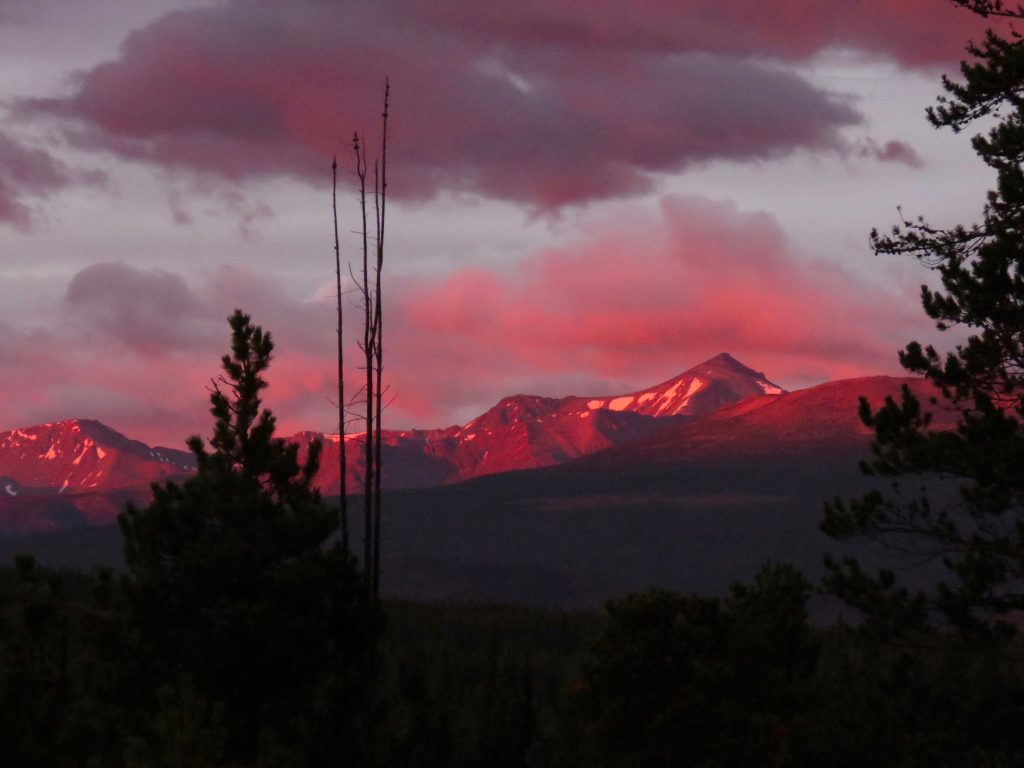
Perkins Peak was conquered! (Not by me unfortunately, just by the volunteers.). This view was taken from my house one particularly lurid morning.
(If you are tired of endless alpine plants, this is not the post for you. Best skip and go to the next one!)
Looks like no one is bothering to repair the road this year. After this trip I warned friends to bring along a few more logs to fill in the gap. At this point, it is not quite wide enough for a truck, although an ATV had little difficulty. We were still social distancing so from this point, the volunteers rode my quad and I drove to the treeline with my truck.
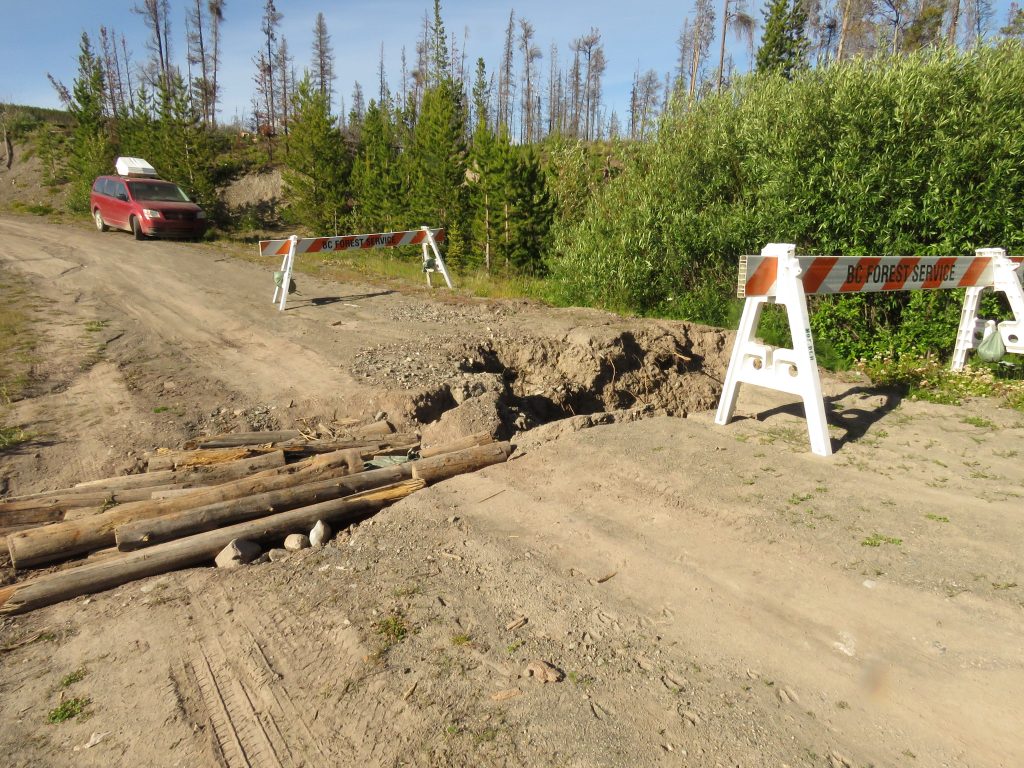
In the upper forest, the paintbrush were now in their prime.
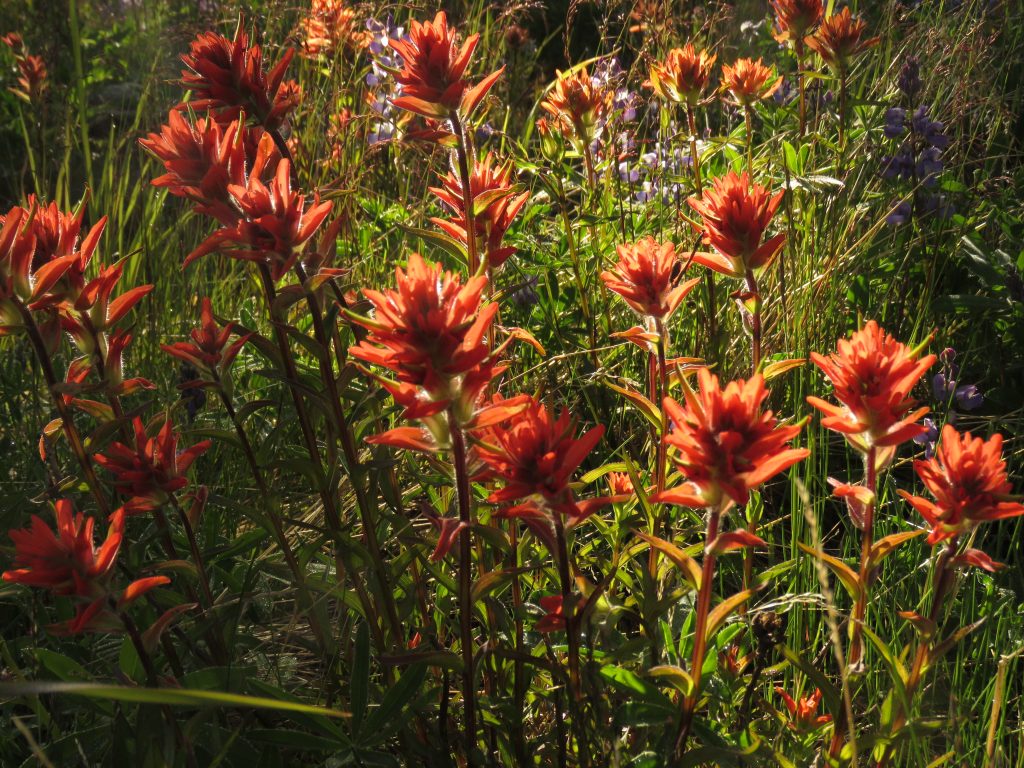
At the treeline, I took over the quad and the volunteers hiked towards the summit. They (and Harry) are tiny dots about a quarter of the way up on the right.
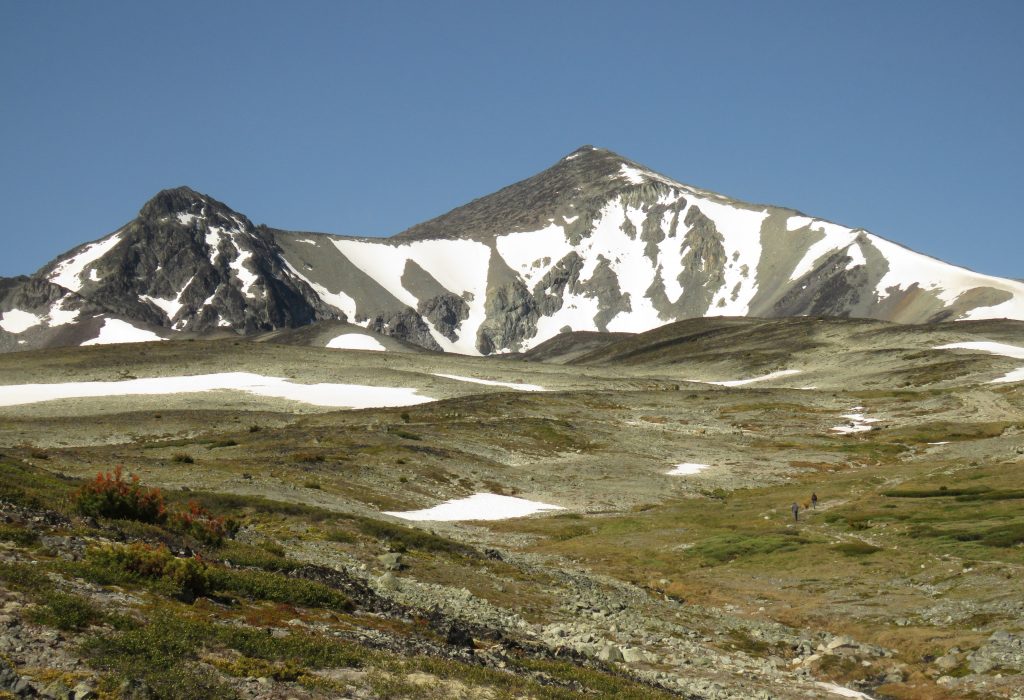
I was unable to take that route as a big snowbank foiled the ATV. So once again I crossed the creek and went towards the south mine. I thought the flowers would have been finished, but the cool, rainy weather had prolonged them and they were fantastic. Wild gardens were everywhere.
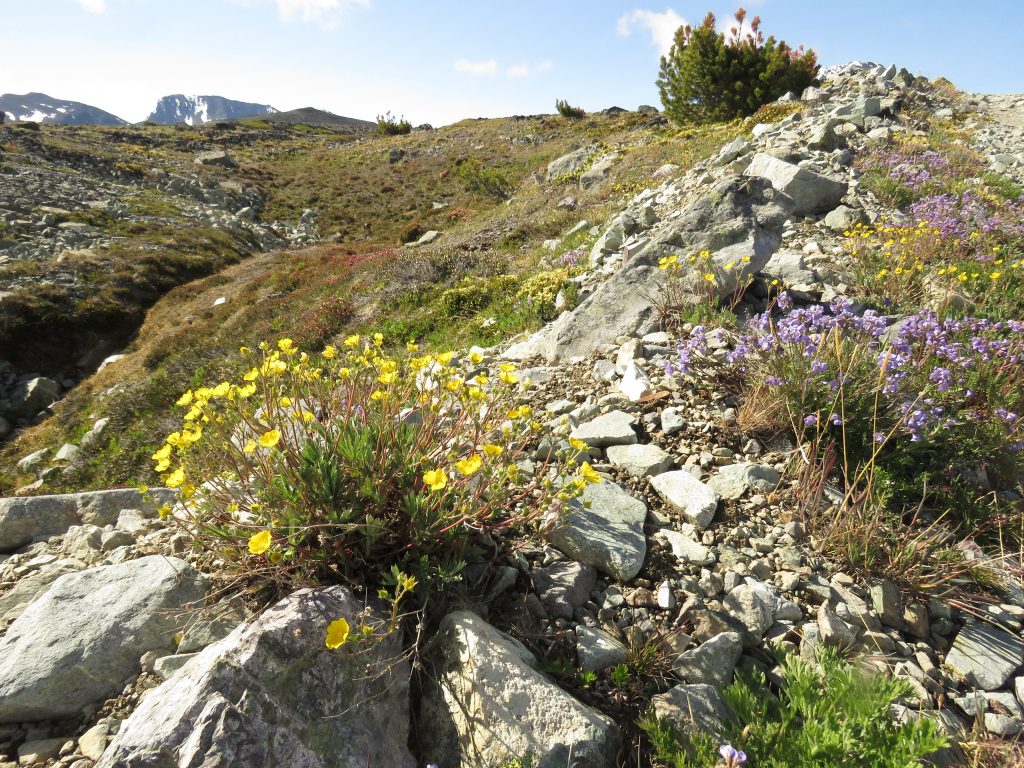
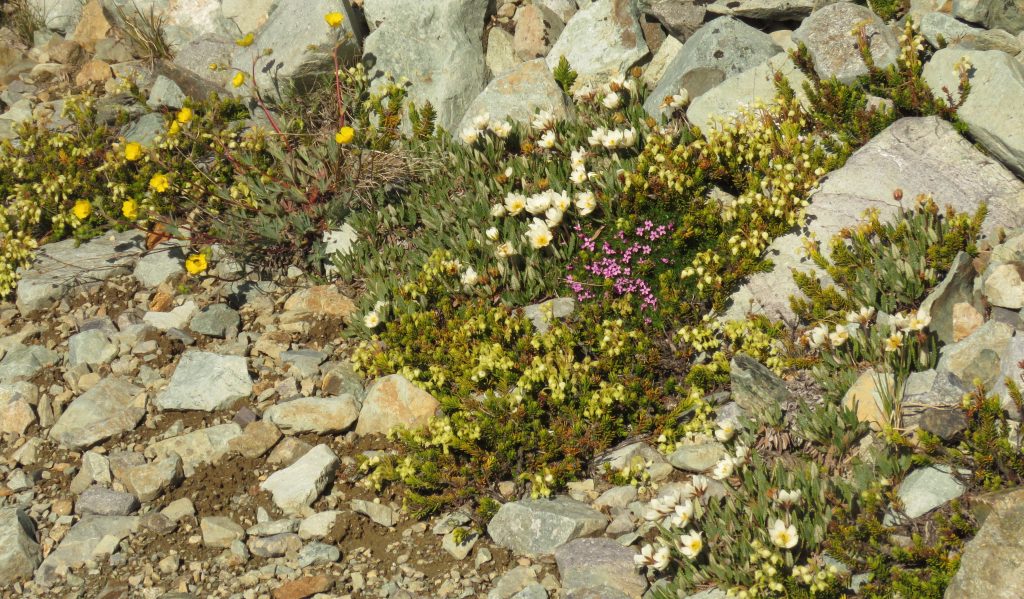
The first alpine harebells were out.
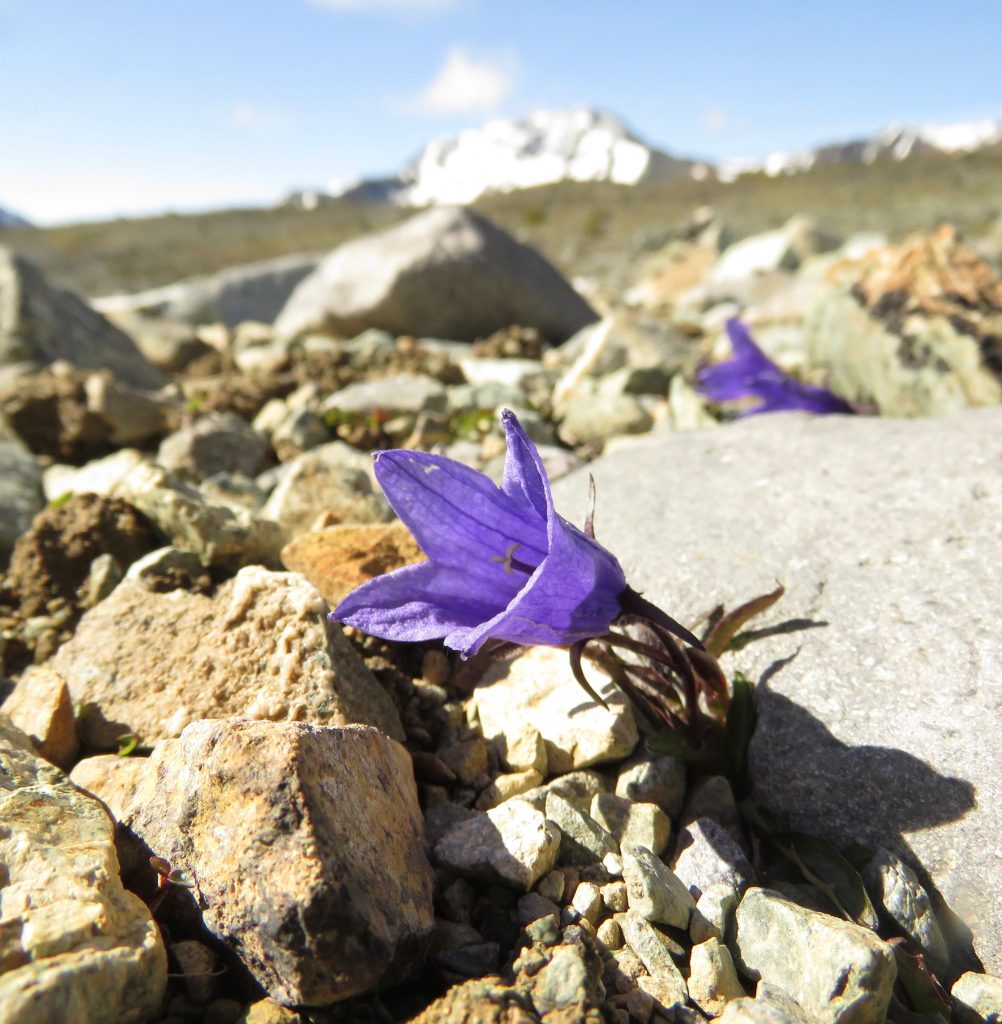
Parts of the creek that had been under a snowdrift two weeks before were now full of globe flowers.
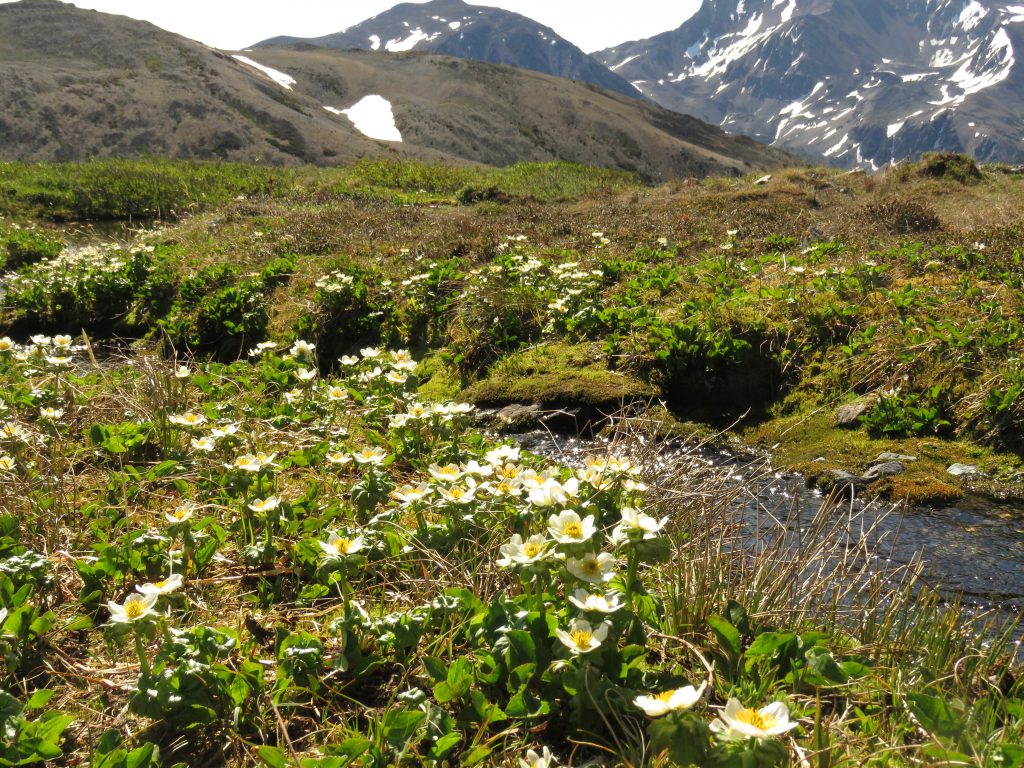
In the dry areas, cut-leafed fleabane thrived.
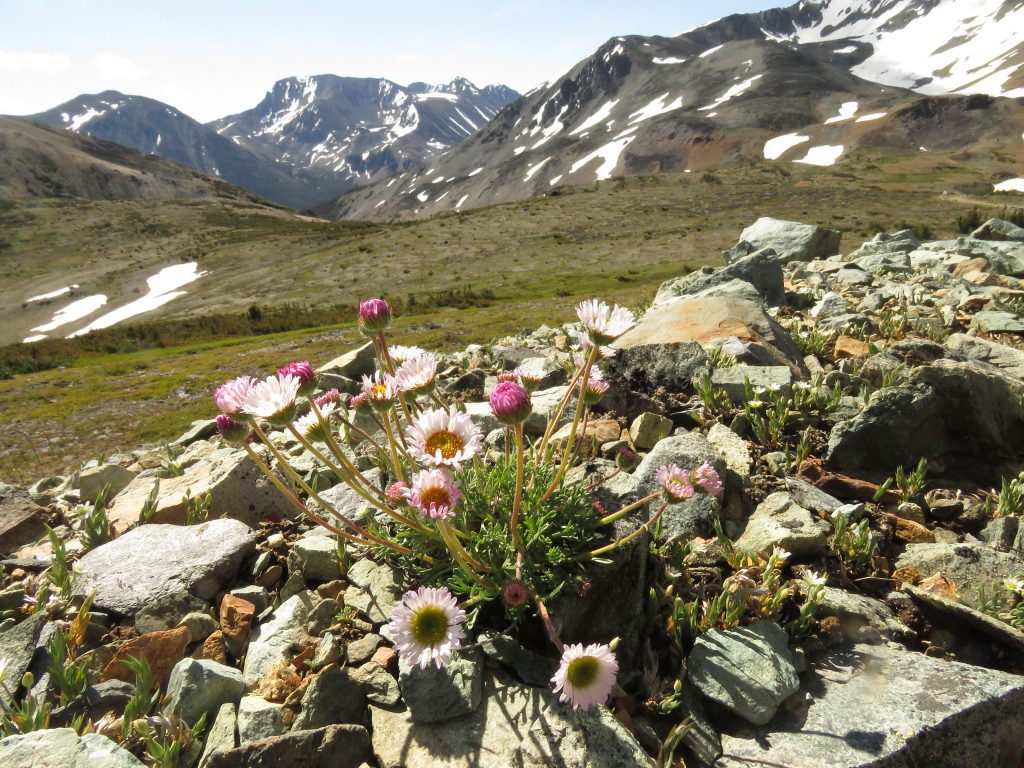
And everywhere was the insanely pink moss campion.
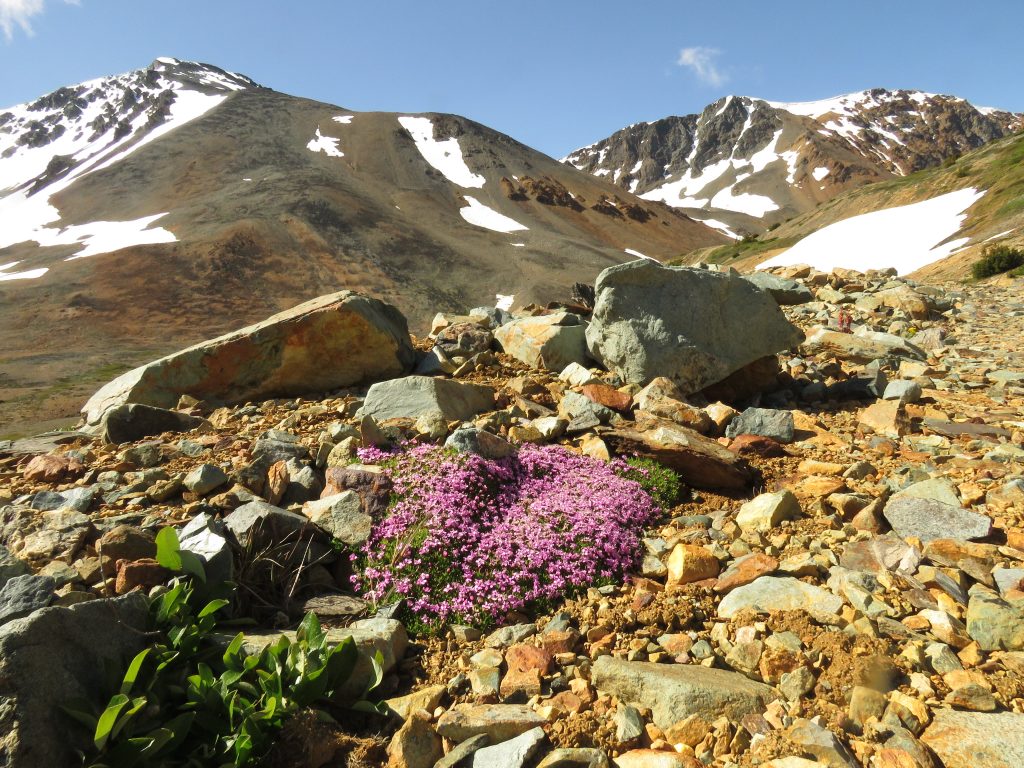
Yellow heather is extremely common in all the alpine areas around here.
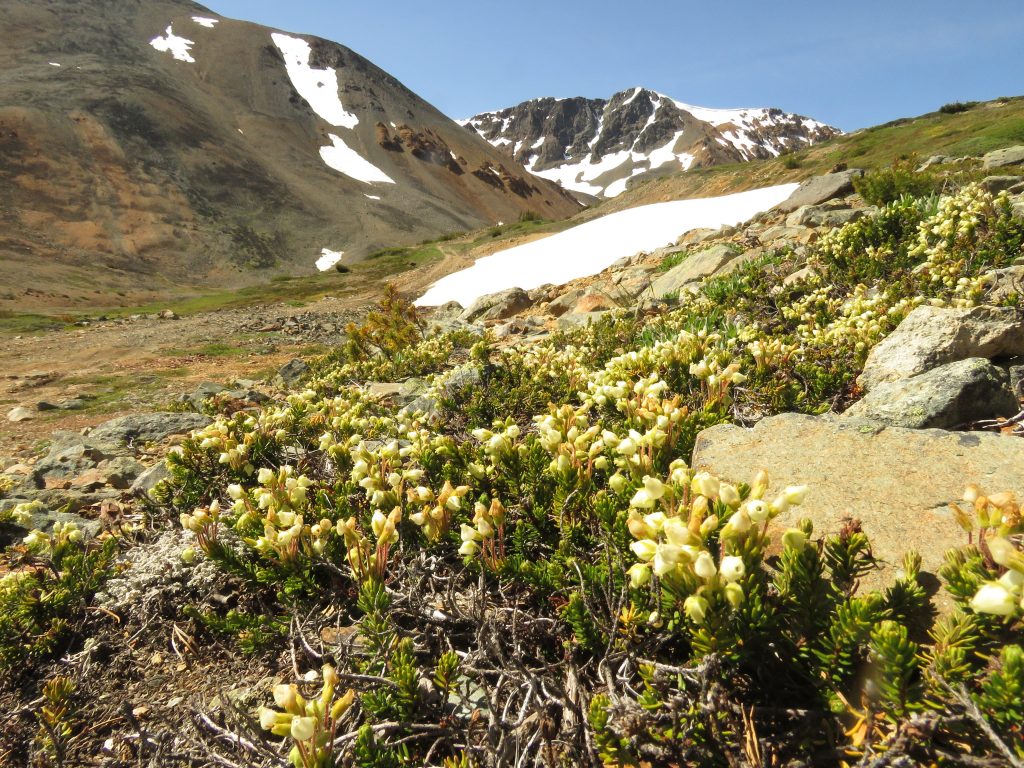
Red heather is less so.
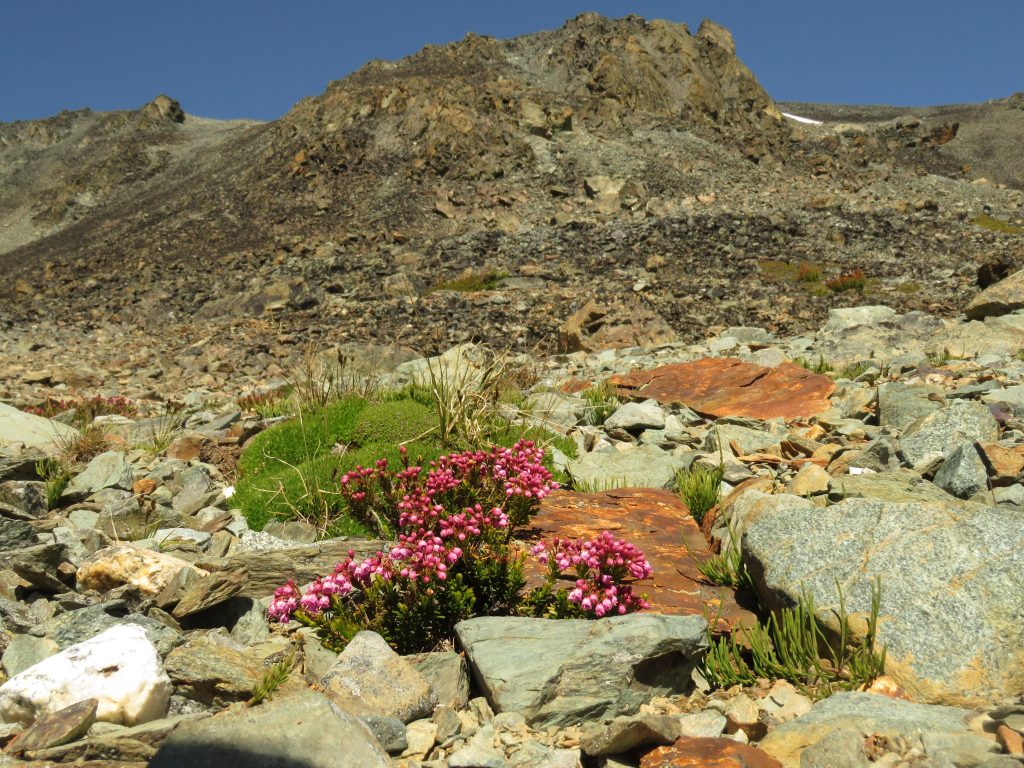
These two species hybridize to produce pink heather.
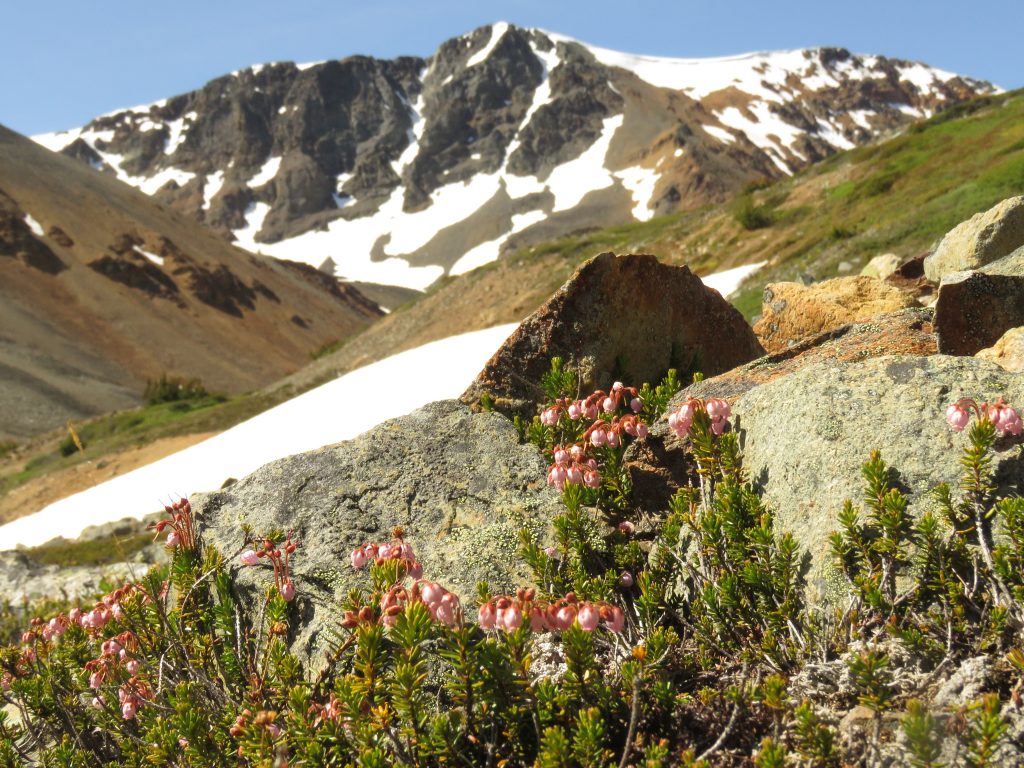
There are also two species of white heather.
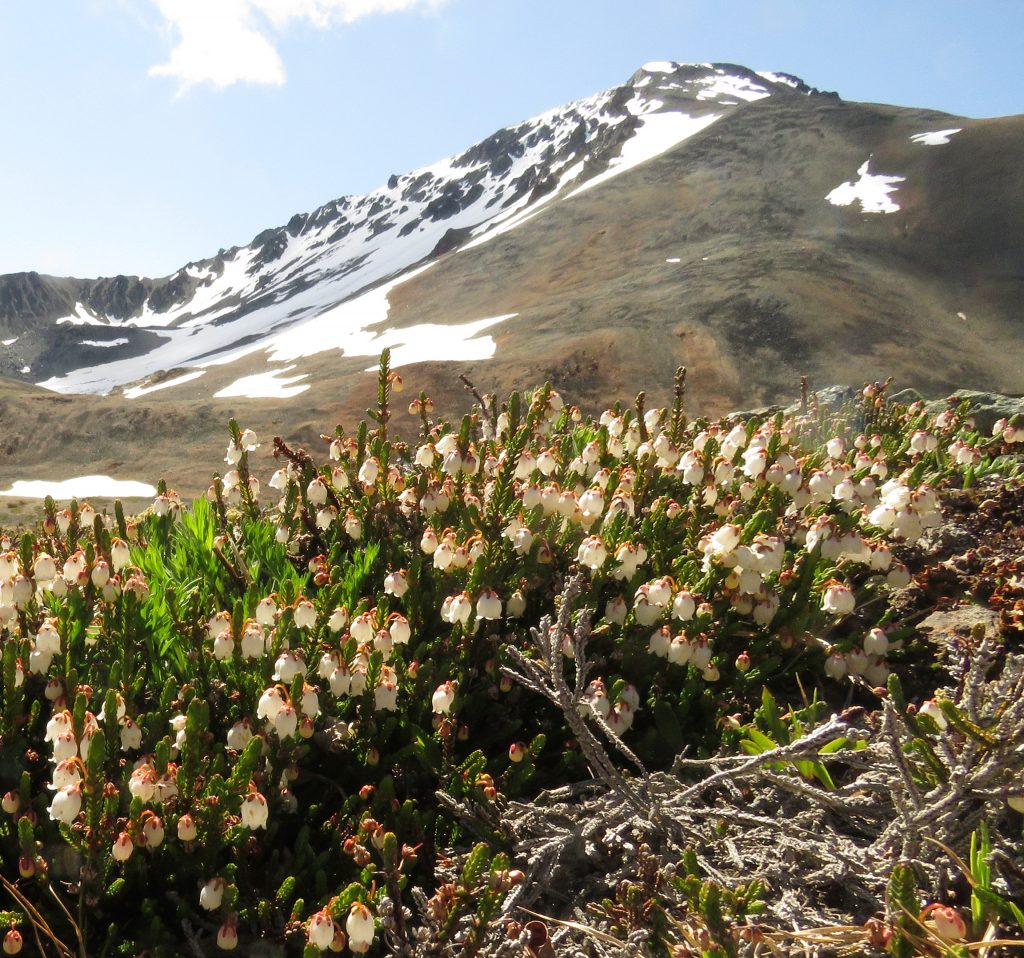
It took me about two hours to creep around a damp area not much bigger than a larger house lot.
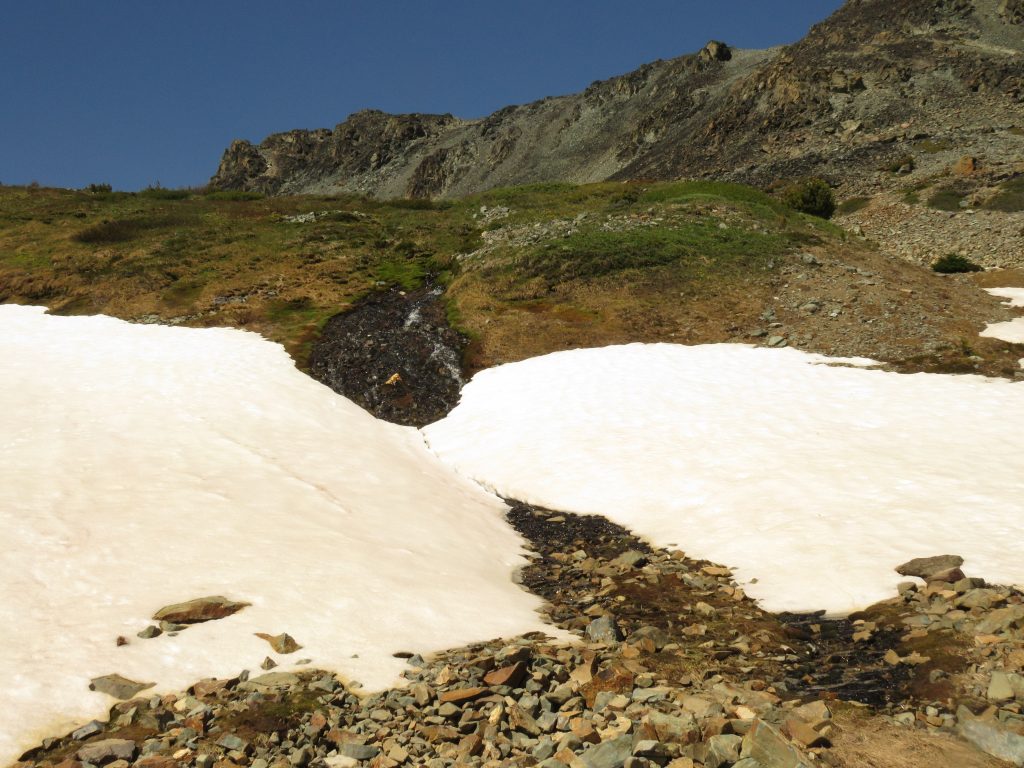
There was much to see. Glaucous gentian – this weirdly coloured flower with its narrow mouth that must host a specific pollinator.
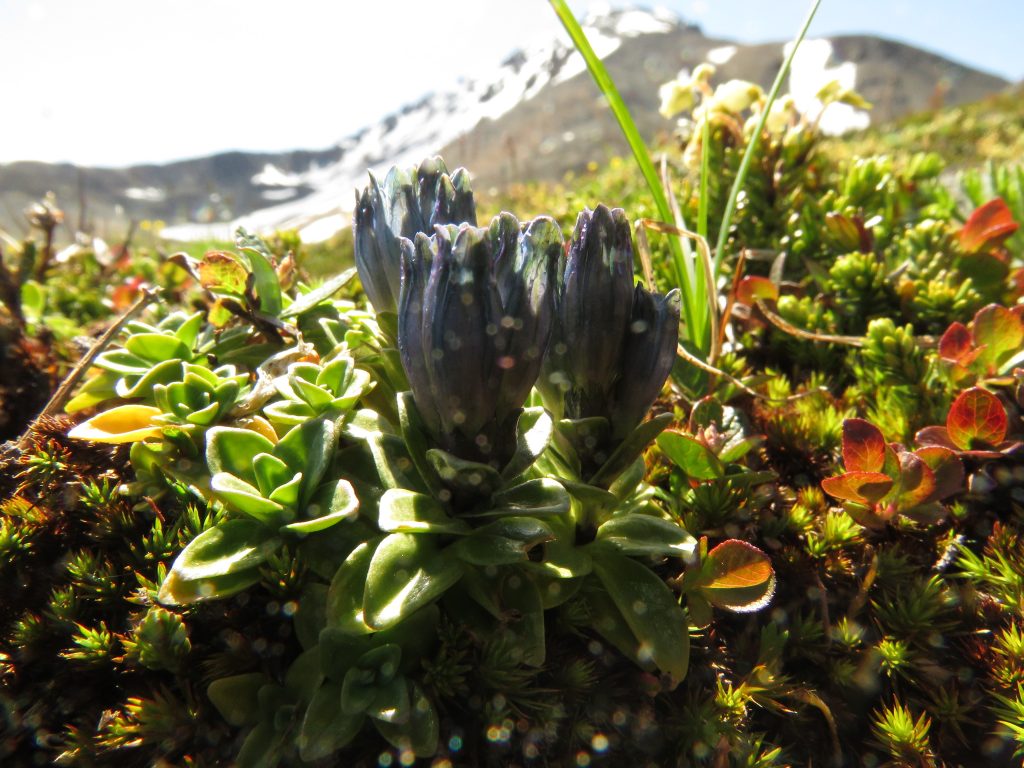
And, amazingly, the tiny moss gentian I first saw in a different patch last year was blooming also.
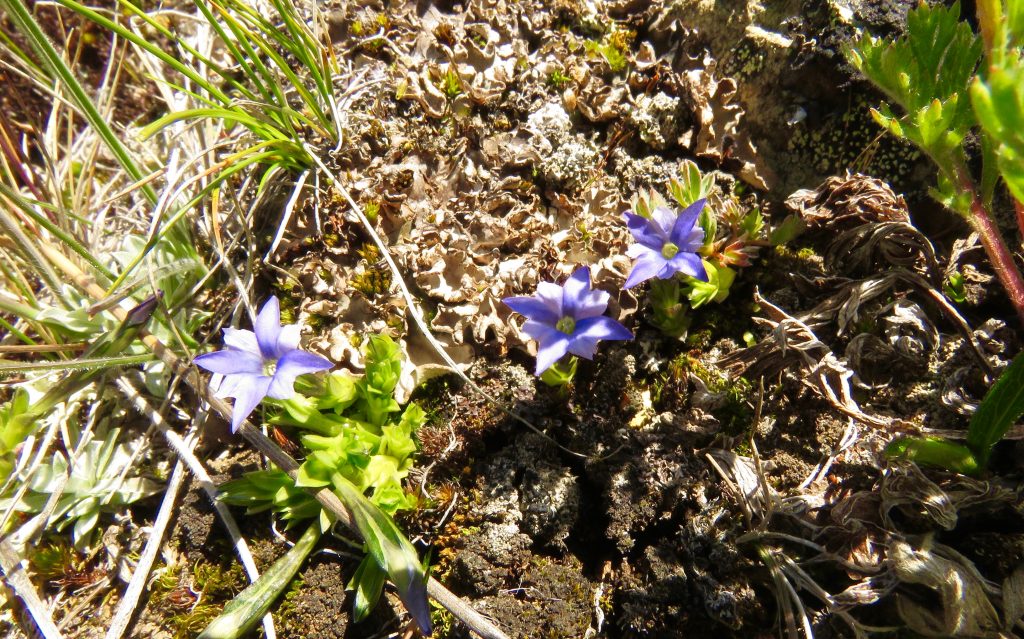
Mountain meadow buttercups were common. They like wet feet.
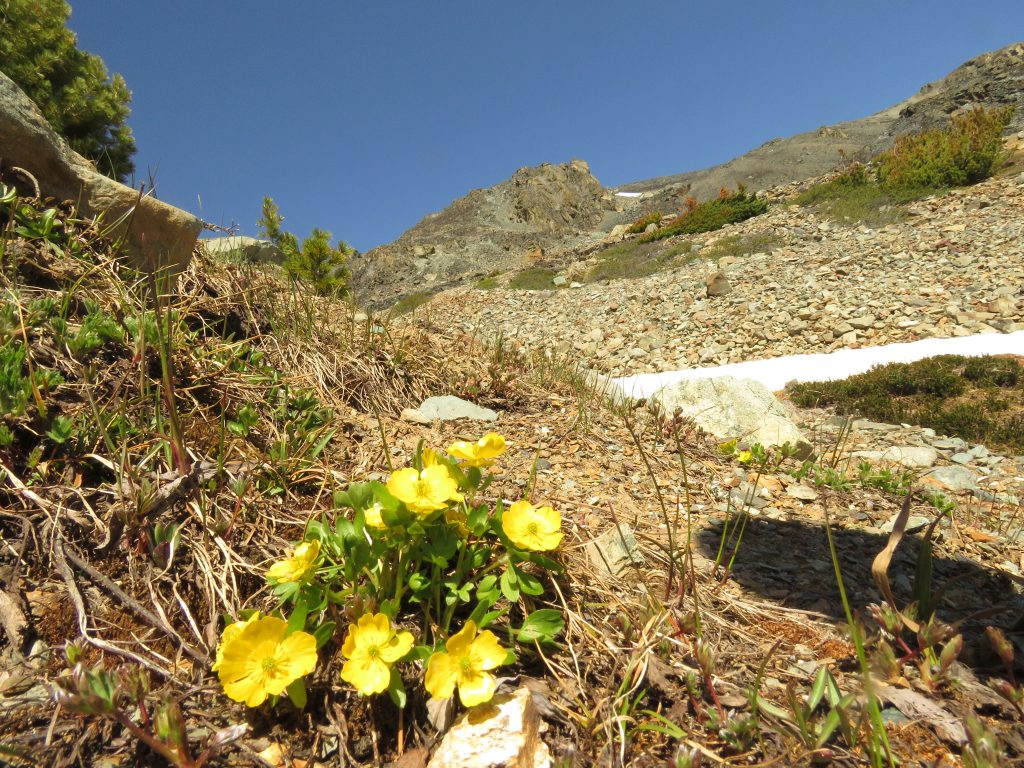
And one of two potentilla species, this one probably P. uniflora. It like dry feet.
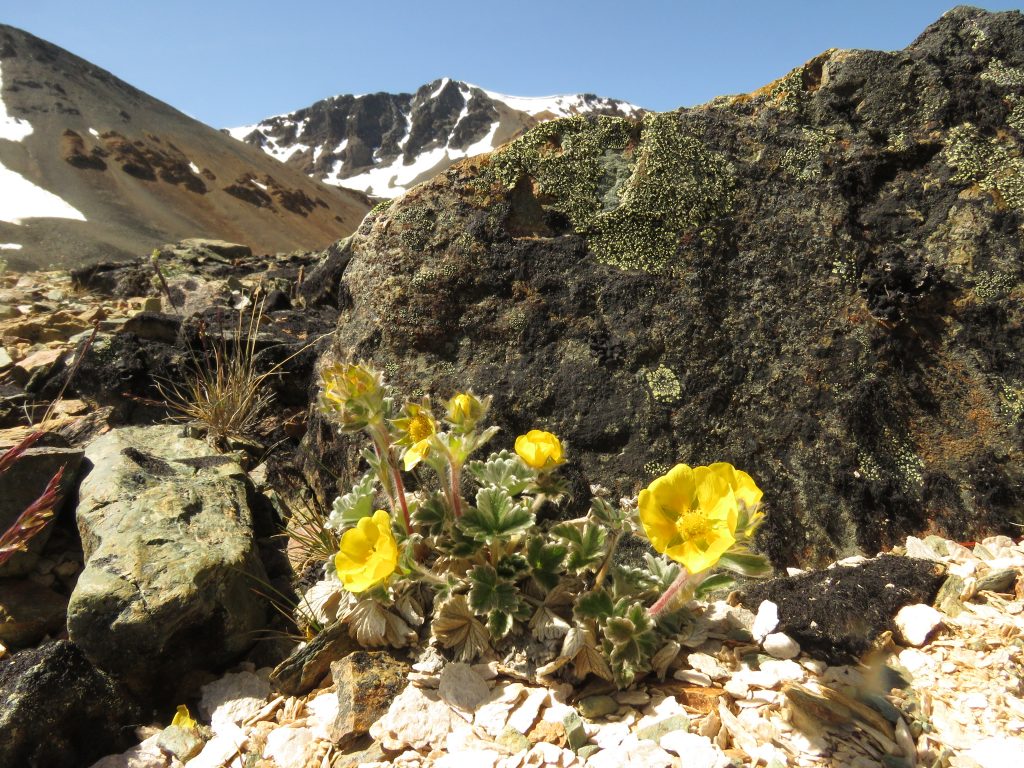
On a nearby dry slope was a native dandelion, relative to the introduced species that is so common on roadsides and lawns. This species, however, grows only at high altitudes on dry shale slopes.
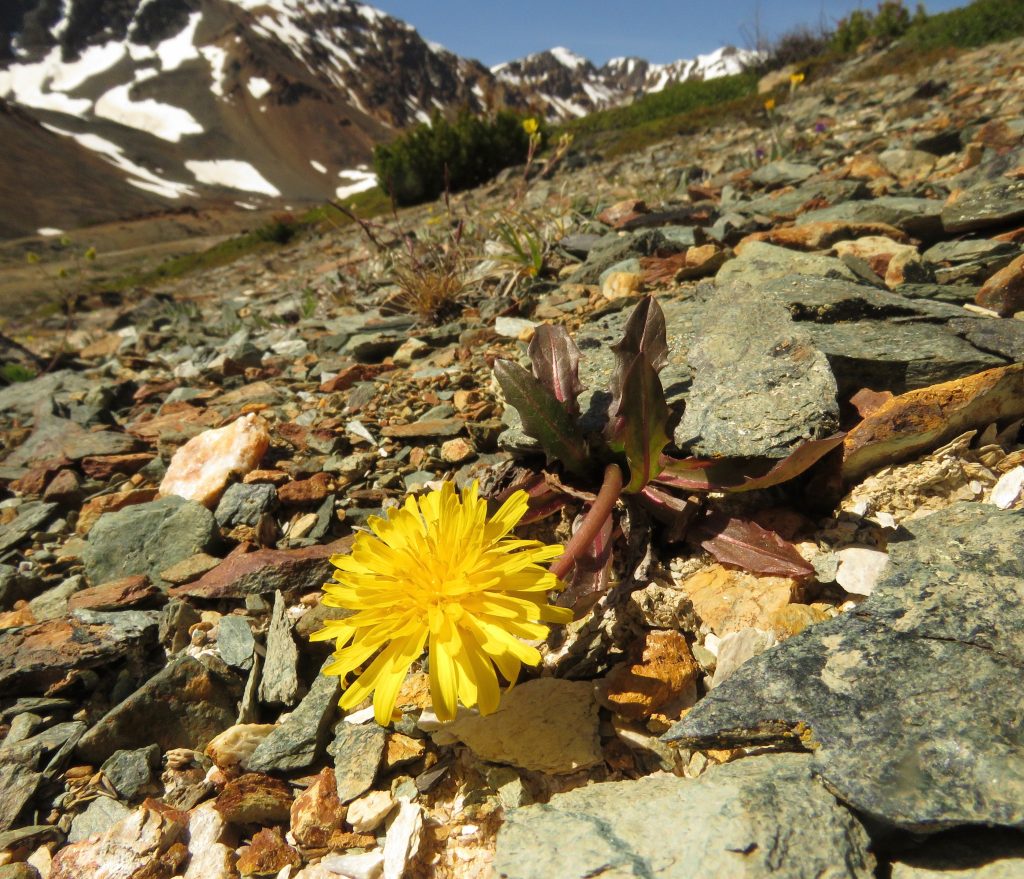
It is only distantly related to goldenweed.
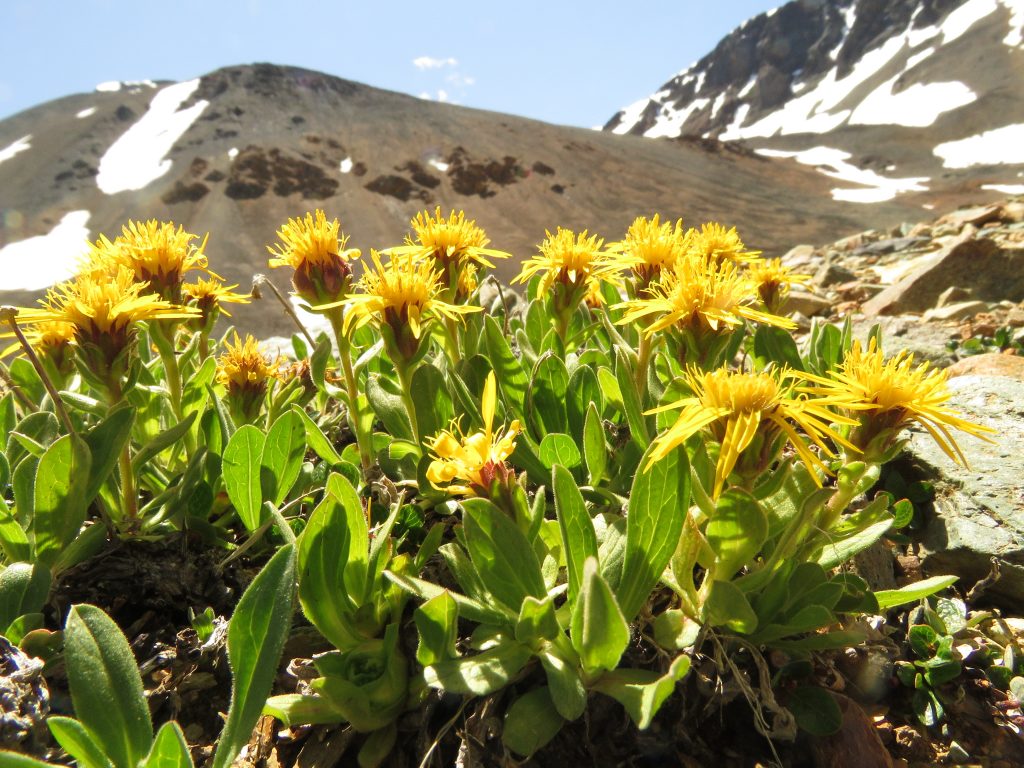
Three more superficially similar flowers. Mountain marsh marigolds. (Wet.)
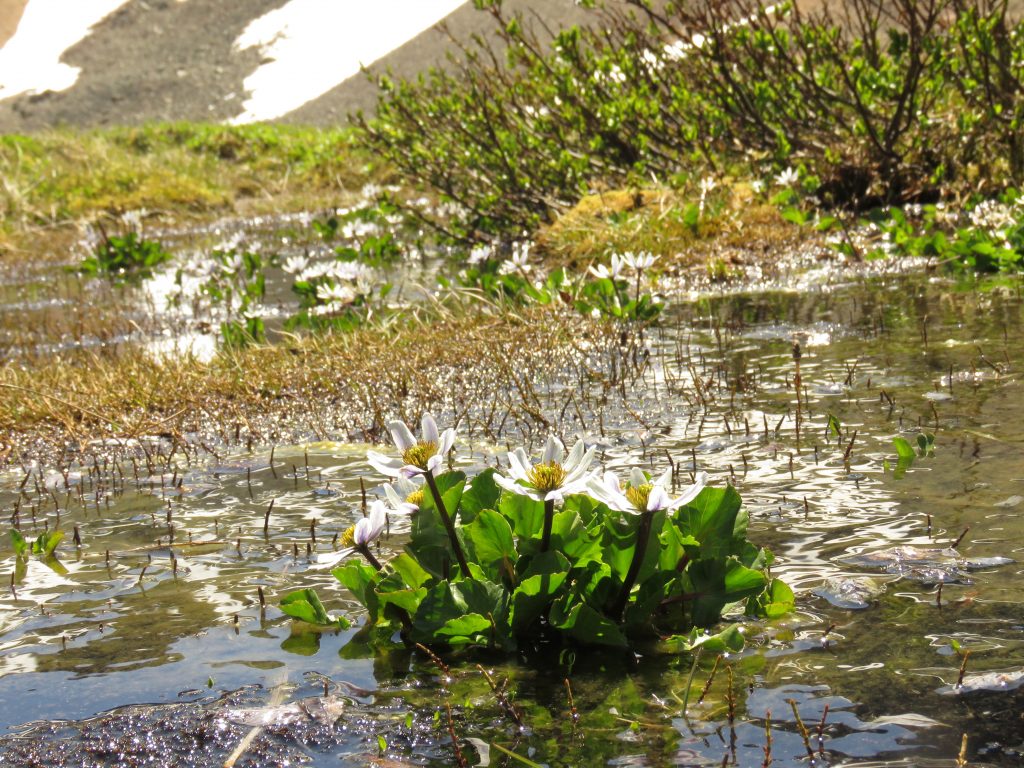
Eight-petalled avens. (Dry)
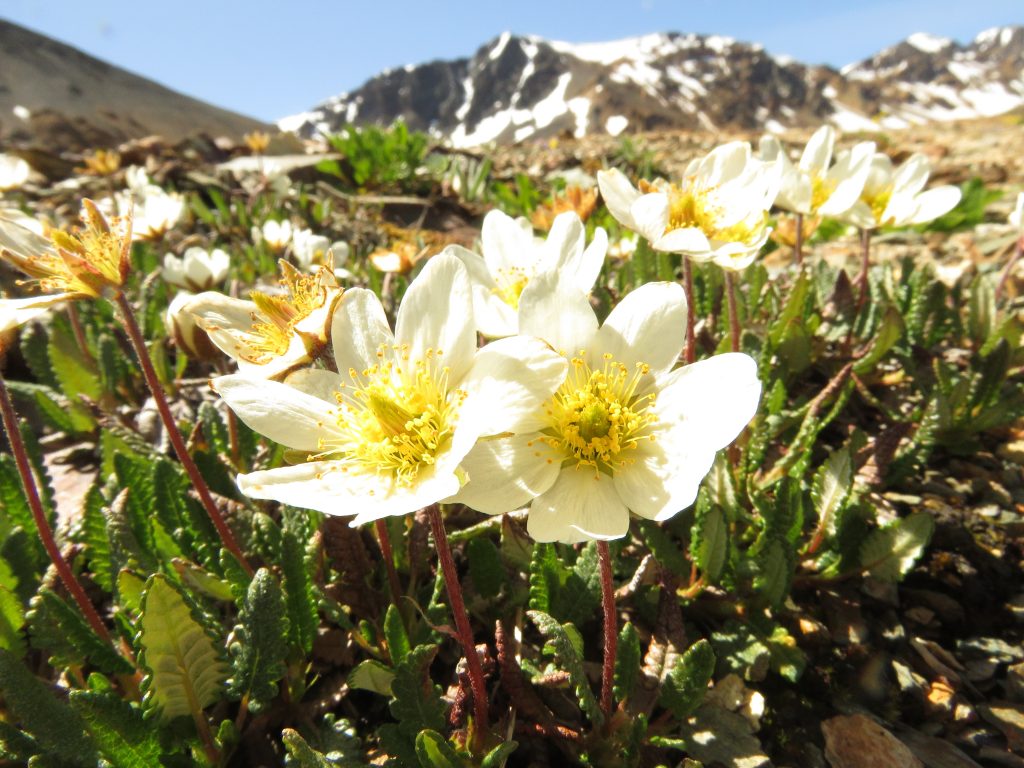
And northern anemones. (Slightly damp)
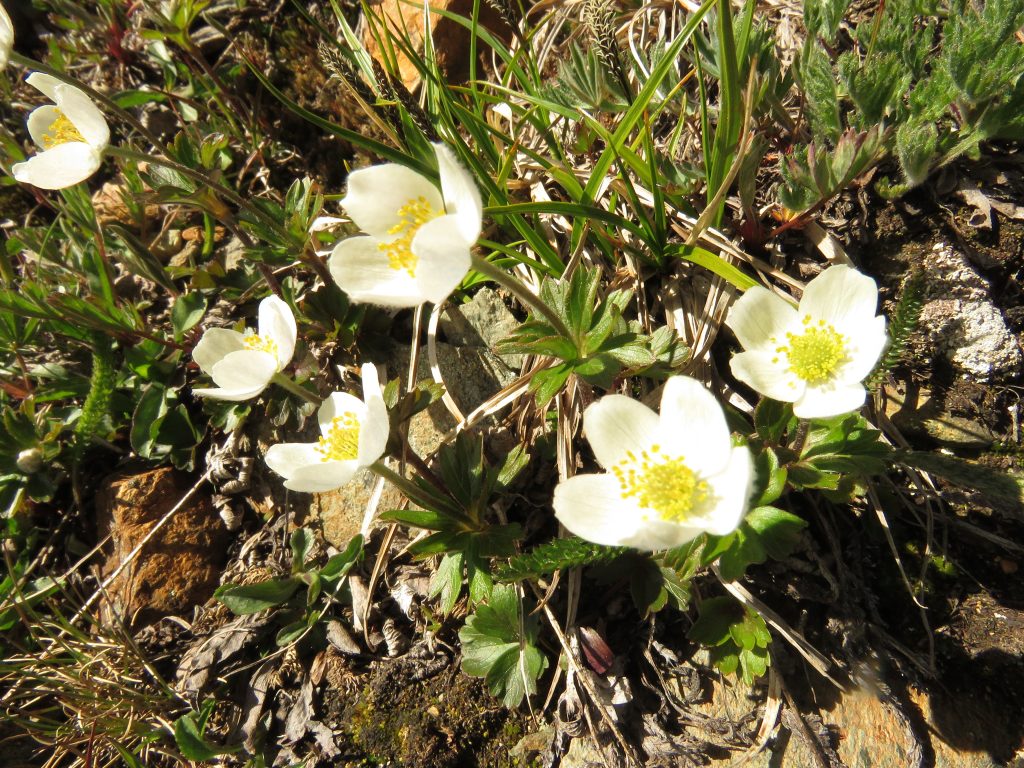
Below the road was a single patch of Lyall’s lousewort.
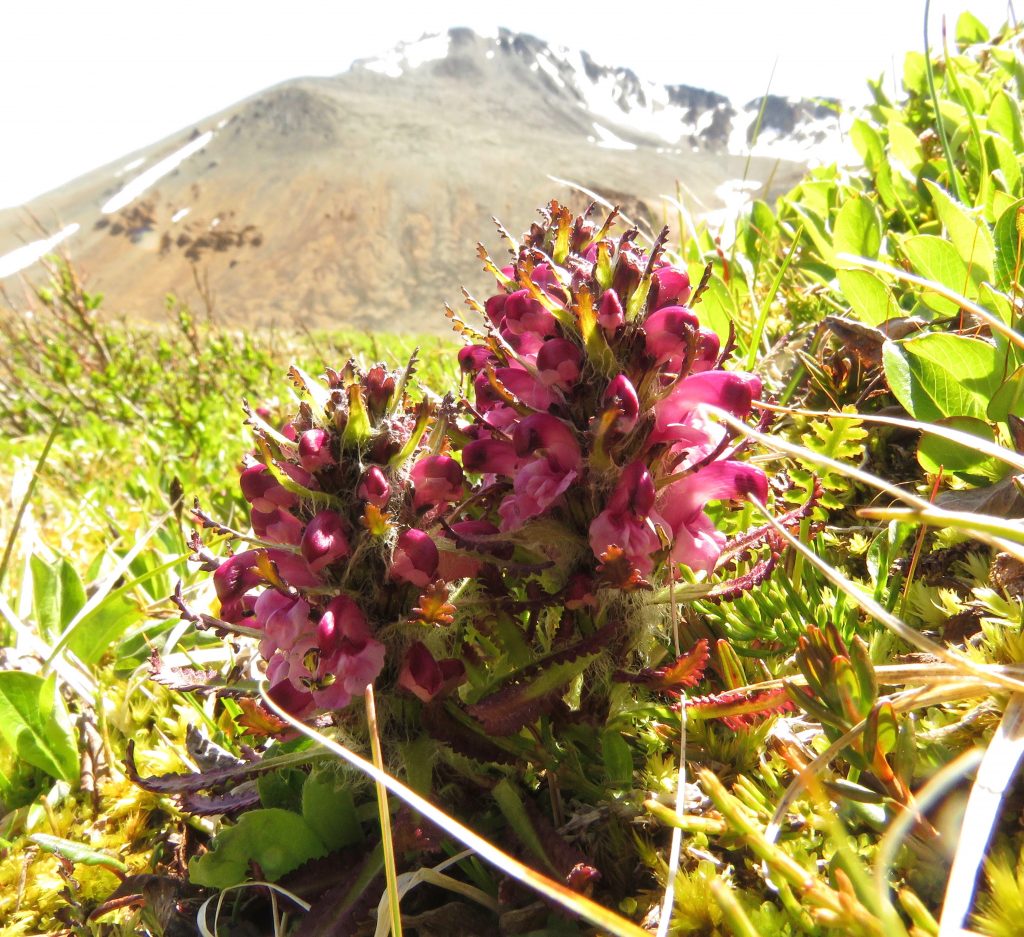
And in the same damp area, bog laurel.
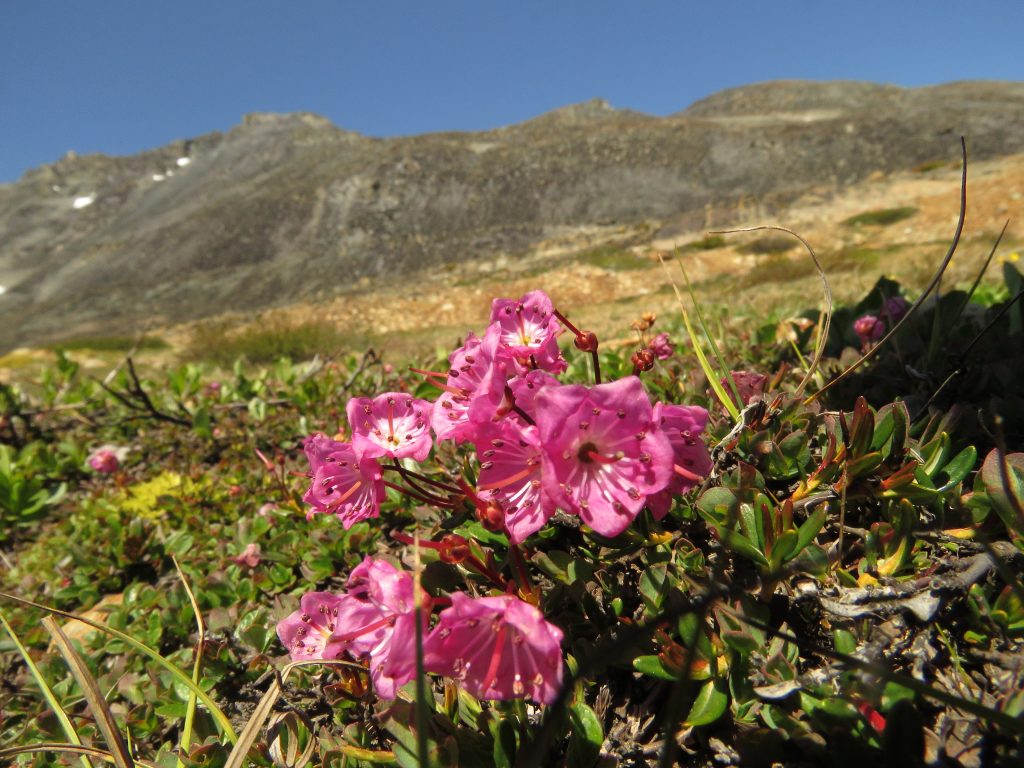
The creek was getting higher into the mountains.
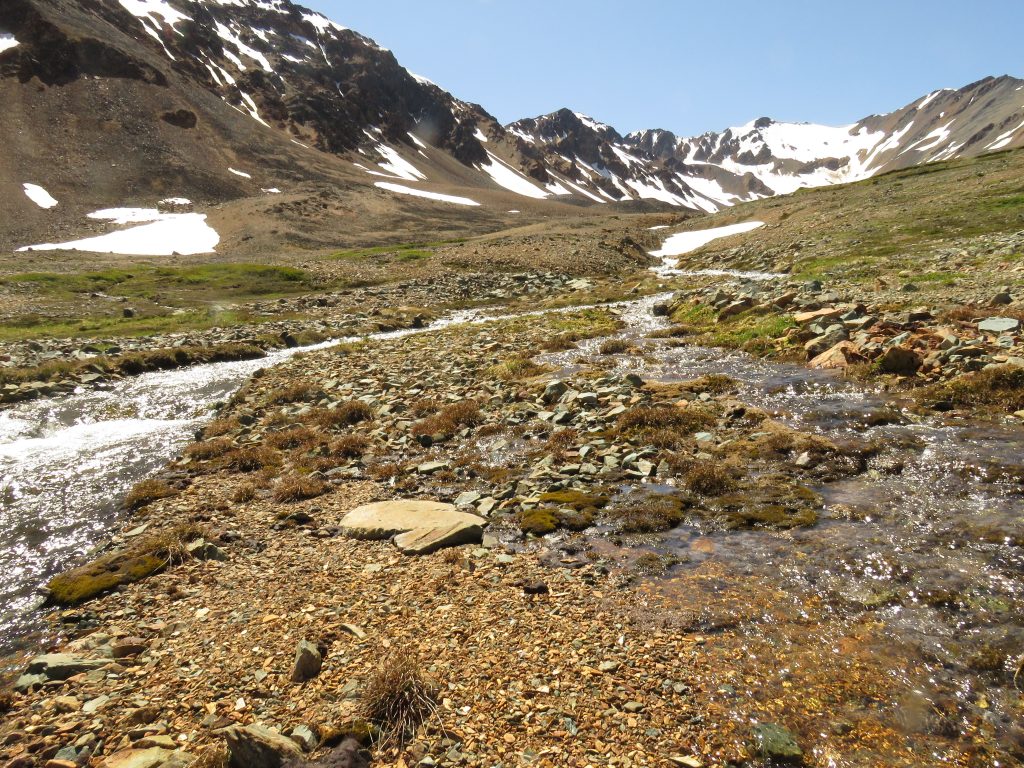
At this point I was entertained by a white-tailed ptarmigan.
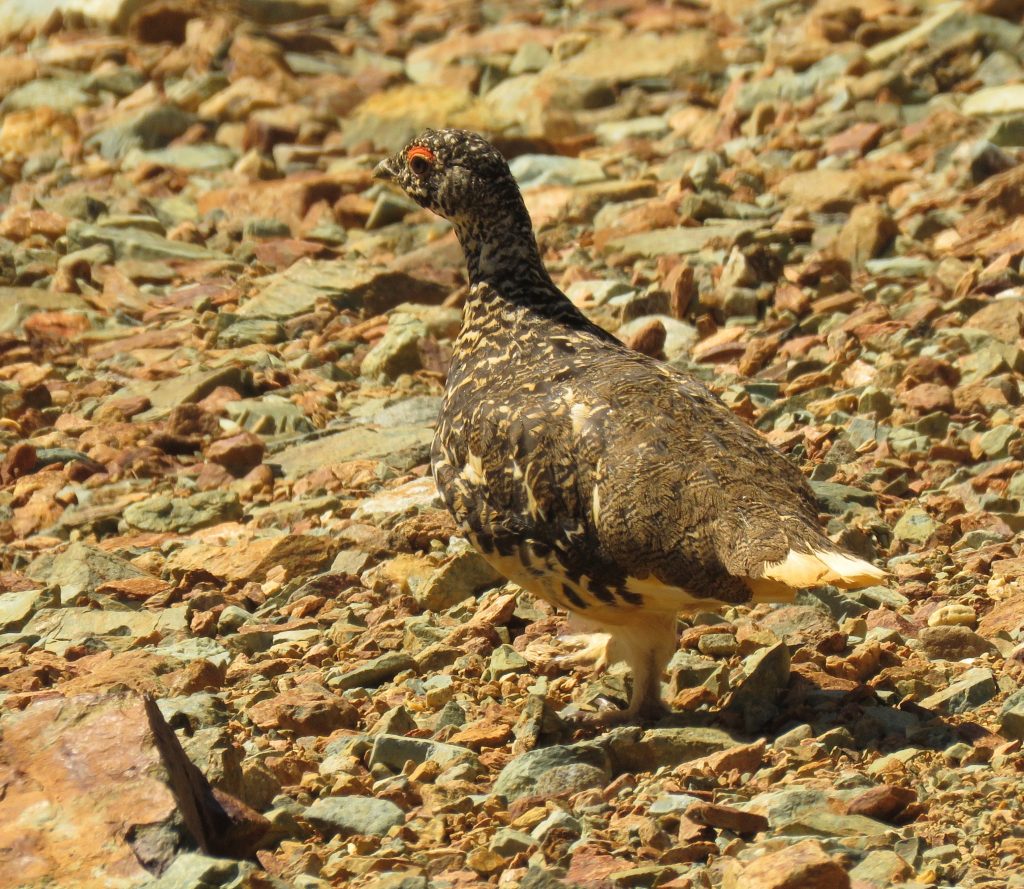
Flowers were getting sparser. Payson’s draba clung to rocks.
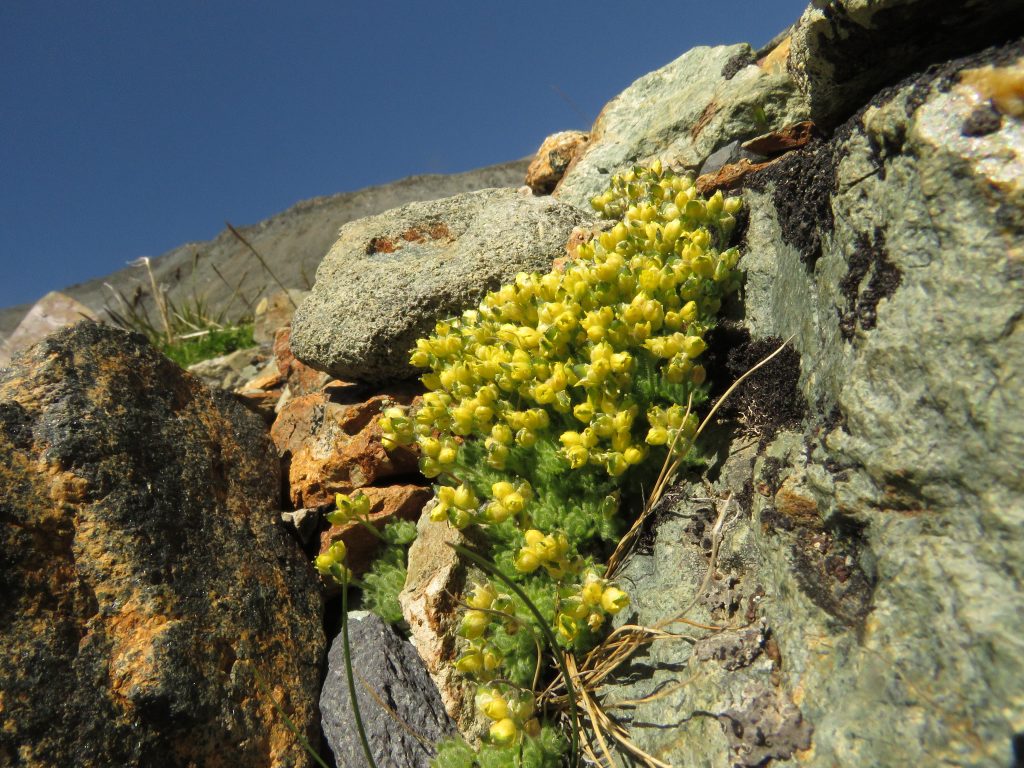
Small-flowered groundsel glowed in a damper patch,
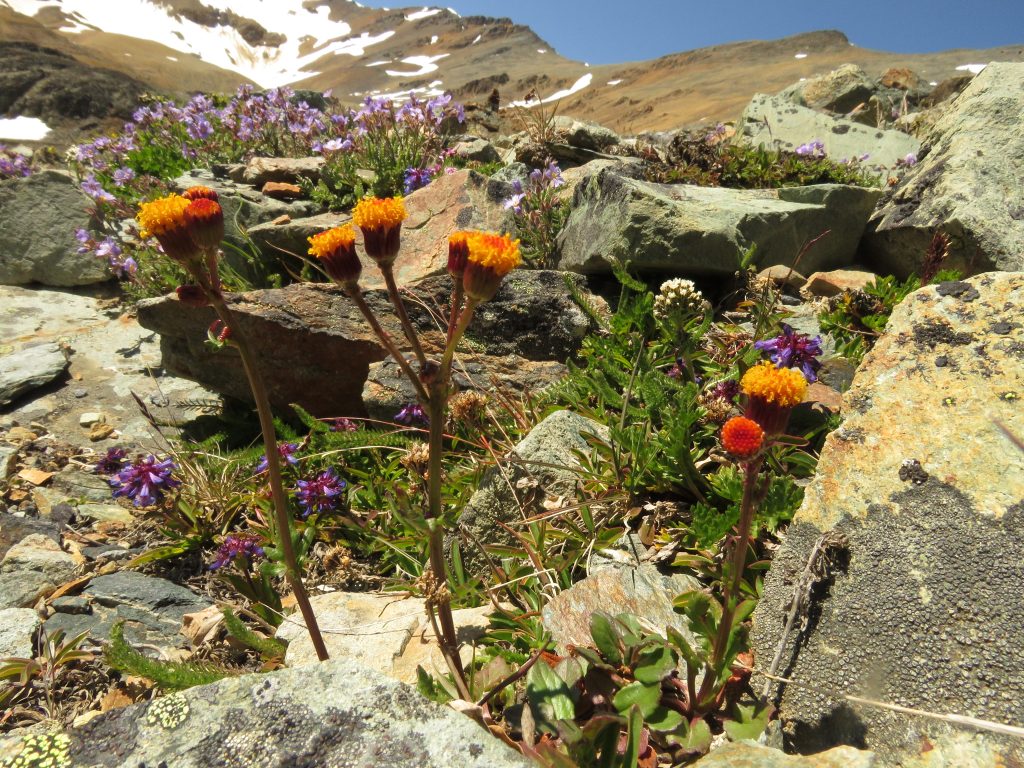
More insanely pink moss campion,
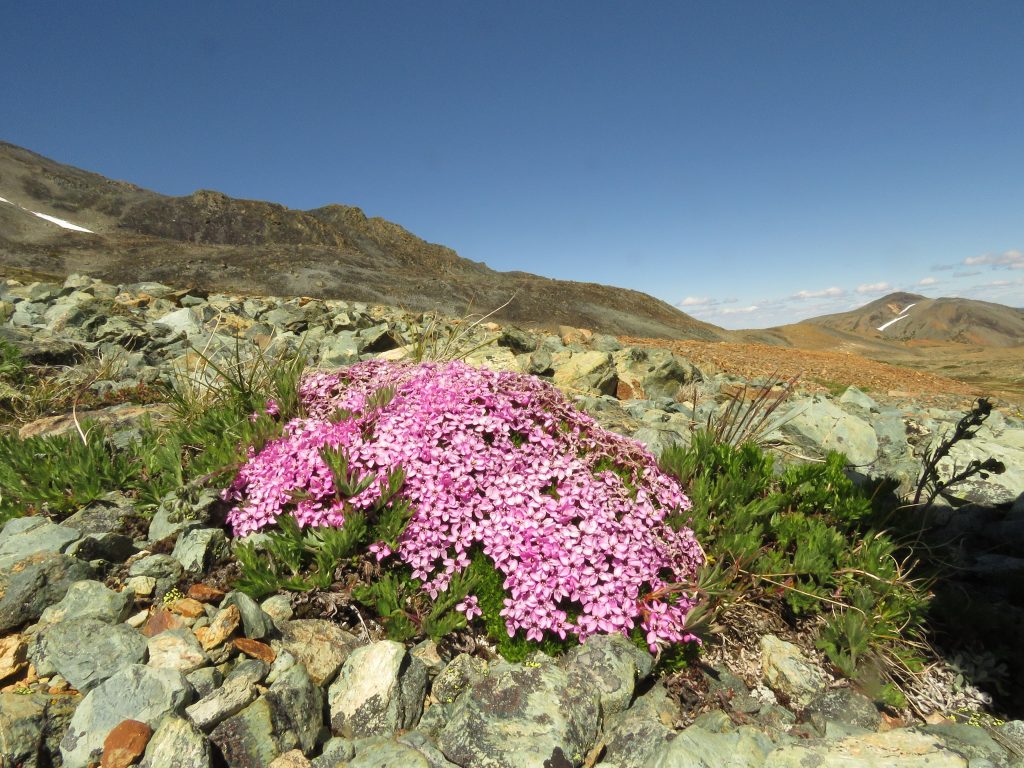
In the mean time, Daniel and Anja conquered Perkins Peak. (Note the difference in quality when you are a professional photographer!)

And I reached the south mine and the end of the road.
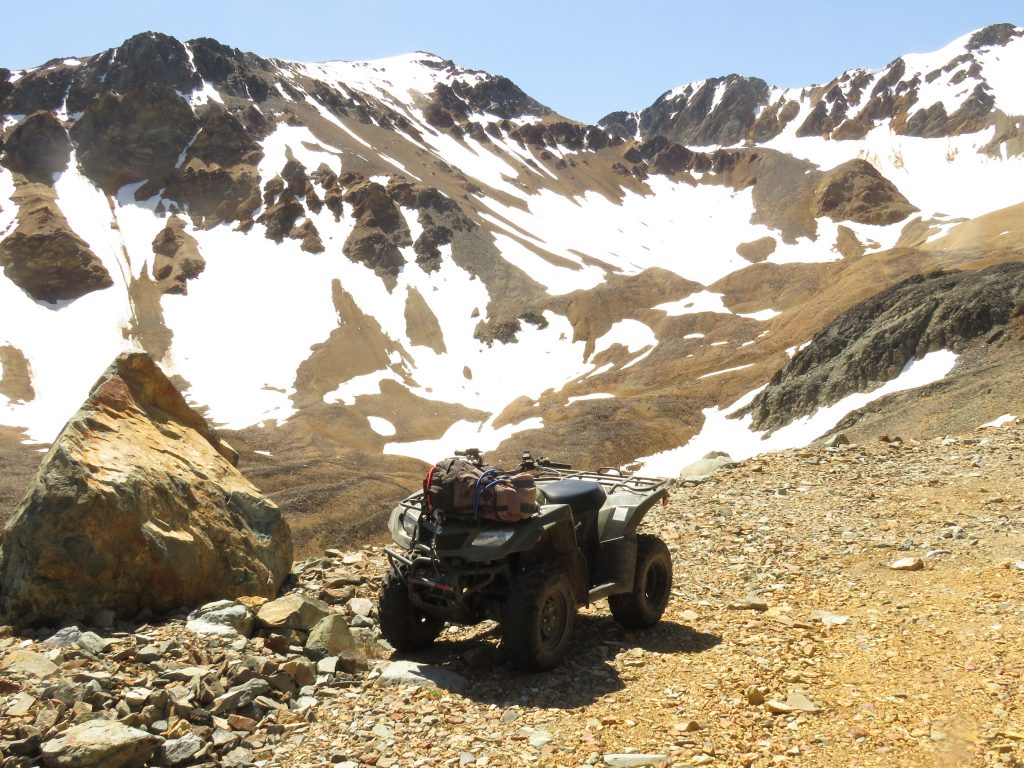

Beautiful , beautiful,beautiful!!!
Sounds like the perfect time for alpines. And a great picture of the volunteers on top of Perkin’s!
Beautiful pictures as usual, Chris! I really enjoyed them.
How could anyone tire of looking at these beautiful plants. You are an encyclopedia of alpine plant knowledge.
Martha, this is just what I thought all the time while looking at these fotos!